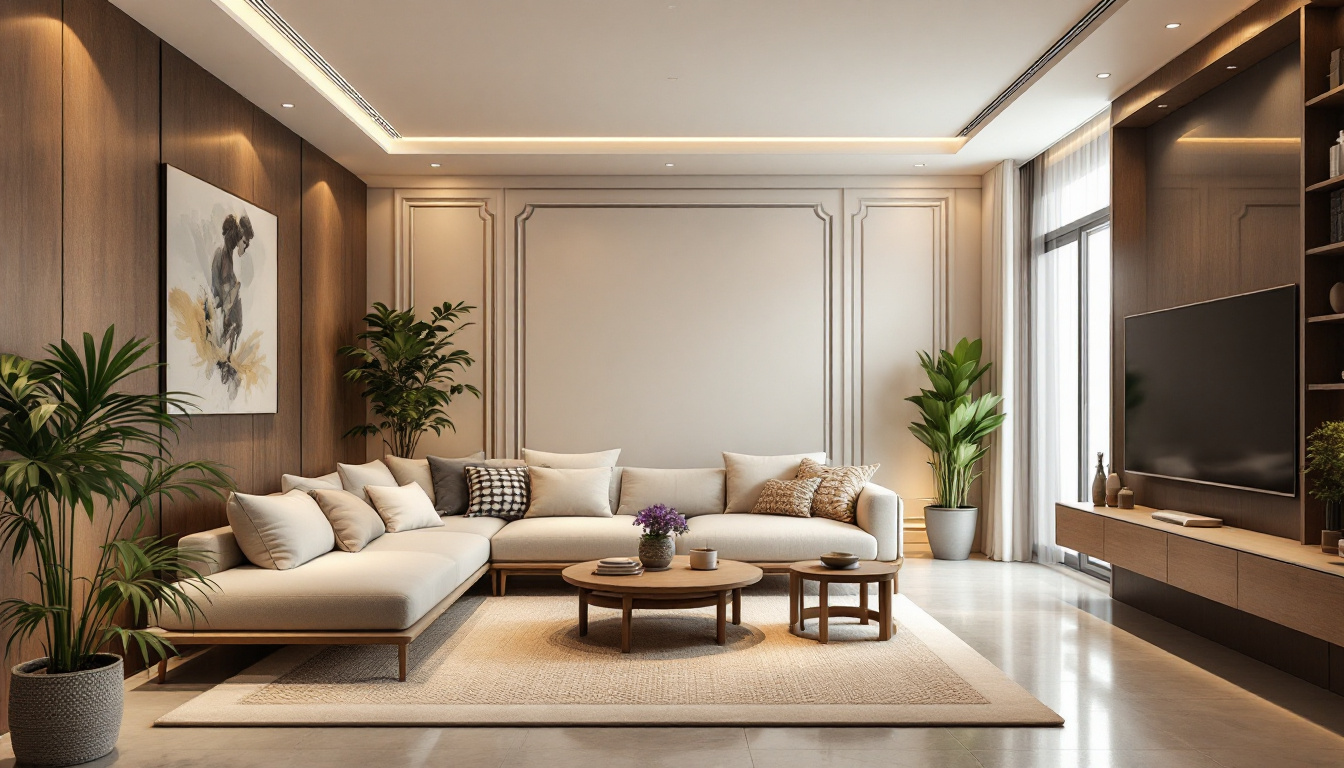

Lighting is an essential aspect of any construction or renovation project, and the choice of lamp light bulbs plays a significant role in determining the outcome. For lighting contractors, understanding the various types of bulbs and their implications can greatly influence project success. This article delves into the different types of lamp light bulbs, their characteristics, and how they impact the work of lighting contractors.
Before diving into the specifics of how lamp light bulbs affect projects, it’s crucial to understand the different types available in the market. Each type of bulb offers unique features that can influence everything from energy consumption to the aesthetic appeal of a space.
The primary types of lamp light bulbs include incandescent, fluorescent, LED, and halogen. Each type has its advantages and disadvantages, which can impact a contractor’s choice based on the project requirements.
Incandescent bulbs are traditional and widely recognized for their warm glow. However, they are less energy-efficient and have a shorter lifespan compared to newer technologies. Fluorescent bulbs, on the other hand, are more energy-efficient and have a longer life but may require more complex fixtures. Their flickering light and color rendering can sometimes be a drawback, especially in settings where visual accuracy is paramount.
LED bulbs have gained popularity due to their exceptional energy efficiency and longevity. They can produce a wide range of colors and are often dimmable, making them versatile for various applications. Additionally, their ability to withstand frequent on-off cycling makes them ideal for spaces with variable occupancy. Halogen bulbs, a type of incandescent, offer brighter light and improved efficiency but still fall short of LED technology. They can also generate significant heat, which can be a concern in enclosed spaces.
Energy efficiency is a crucial factor for lighting contractors. The choice of bulb can significantly affect the overall energy consumption of a building. LED bulbs, for instance, consume less power and can lead to substantial savings on electricity bills over time. This aspect is particularly important in commercial projects where lighting can account for a significant portion of operational costs.
Contractors must also consider the initial cost of the bulbs versus their long-term savings. While LED bulbs may have a higher upfront cost, their longevity and lower energy consumption often make them a more cost-effective choice in the long run. Furthermore, many regions offer incentives or rebates for using energy-efficient lighting, which can further offset the initial investment and encourage the adoption of sustainable practices.
The type of lamp light bulb chosen can also influence the overall design of a project. For instance, the color temperature of bulbs can affect the mood and ambiance of a space. Warmer bulbs create a cozy atmosphere, while cooler bulbs can make a space feel more modern and vibrant. This is particularly relevant in residential settings, where homeowners may prefer softer lighting in living areas and brighter, cooler lighting in workspaces.
Lighting contractors must work closely with designers and clients to select the appropriate bulb types that align with the intended design and functionality of the space. This collaboration ensures that the lighting complements the architecture and enhances the overall aesthetic. Additionally, the placement of fixtures and the choice of dimming options can further refine the ambiance, allowing for dynamic adjustments that cater to different activities and times of day. Understanding the interplay between light and design can elevate a project, transforming not just the functionality but also the emotional experience of the space.
Lighting contractors must navigate a landscape of regulations and standards when selecting lamp light bulbs for their projects. These regulations often dictate the types of bulbs that can be used in specific applications, especially in commercial and industrial settings.
Local building codes may specify energy efficiency standards that contractors must adhere to. For example, some jurisdictions may require the use of energy-efficient bulbs in commercial buildings to reduce overall energy consumption.
Contractors should stay informed about these regulations to ensure compliance and avoid potential fines or project delays. Regular training and updates on local codes can help contractors maintain their competitive edge in the industry. Additionally, understanding the nuances of these codes can assist contractors in making informed decisions that align with both legal requirements and client expectations. This proactive approach not only enhances project efficiency but also fosters trust with clients who value transparency and adherence to regulations.
With growing awareness of environmental issues, many lighting contractors are now considering the ecological impact of their bulb choices. LED bulbs, for instance, are not only energy-efficient but also contain no hazardous materials, making them a more environmentally friendly option.
Contractors can enhance their reputation by promoting sustainable practices, such as using eco-friendly bulbs and recycling old lighting fixtures. This commitment to sustainability can also resonate with clients who prioritize green building practices. Furthermore, many municipalities offer incentives for projects that incorporate sustainable lighting solutions, providing contractors with potential financial benefits. By leveraging these opportunities and staying abreast of advancements in lighting technology, contractors can position themselves as leaders in the industry, appealing to a growing market of environmentally-conscious consumers. As the demand for sustainable solutions continues to rise, the role of lighting contractors in promoting eco-friendly practices becomes increasingly vital, making it essential for them to adapt and innovate in their approaches to lighting design and implementation.
The choice of lamp light bulbs can also present unique challenges during installation and maintenance. Understanding these challenges is crucial for lighting contractors to ensure smooth project execution.
Different types of bulbs may require specific fixtures or installation techniques. For example, LED bulbs often come in various shapes and sizes, necessitating compatible fixtures. Contractors must ensure that the chosen fixtures can accommodate the selected bulbs to avoid installation issues.
Additionally, some bulbs may require special handling or installation methods, especially when dealing with commercial or industrial applications. Proper training and knowledge of these requirements can prevent costly mistakes and delays.
Maintenance is another critical aspect influenced by the type of lamp light bulb used. LED bulbs typically require less frequent replacement, reducing maintenance costs over time. In contrast, incandescent and fluorescent bulbs may need to be replaced more often, which can add to the overall project costs.
Contractors should educate clients on the expected lifespan of different bulbs and the maintenance requirements associated with each type. This transparency helps clients make informed decisions and sets realistic expectations for ongoing upkeep.
Effective communication with clients is vital for lighting contractors, especially when discussing the implications of lamp light bulbs on their projects. Educating clients about the benefits and drawbacks of different bulb types can lead to more informed choices.
Contractors should be prepared to explain the various options available, including energy efficiency, cost, and aesthetic considerations. Providing clients with clear information helps them understand the value of investing in higher-quality bulbs, such as LEDs, despite the initial cost.
Additionally, showcasing the long-term benefits of energy-efficient bulbs can help clients appreciate the potential savings on energy bills and maintenance costs. This educational approach fosters trust and strengthens the contractor-client relationship.
Clients may have concerns about the performance or reliability of certain bulb types. Lighting contractors should be ready to address these concerns with factual information and case studies that demonstrate the effectiveness of their recommendations.
By proactively addressing potential issues, contractors can alleviate client apprehensions and reinforce their expertise in the field. This approach not only enhances client satisfaction but also encourages repeat business and referrals.
The lighting industry is continually evolving, with new technologies and trends emerging regularly. Staying ahead of these trends can provide lighting contractors with a competitive advantage in the market.
One of the most significant trends in the lighting industry is the rise of smart lighting solutions. These systems allow users to control their lighting remotely through smartphones or voice-activated devices, offering convenience and customization.
Lighting contractors should familiarize themselves with smart lighting technologies and their integration into existing systems. Understanding how to install and configure these solutions can open new opportunities for contractors and meet the growing demand for smart home features.
LED technology continues to advance, with improvements in efficiency, color rendering, and design options. Contractors should keep abreast of these developments to offer clients the latest and most effective lighting solutions.
As LED technology becomes more sophisticated, it may also become more affordable, making it an even more attractive option for clients. Contractors who stay informed about these advancements can position themselves as industry leaders and trusted advisors.
The choice of lamp light bulbs significantly impacts lighting contractors’ projects, influencing everything from energy efficiency to design aesthetics. By understanding the various types of bulbs, regulatory compliance, installation challenges, and emerging trends, contractors can make informed decisions that enhance their project outcomes.
Effective communication and education with clients further strengthen these efforts, ensuring that they are satisfied with their lighting choices. As the industry continues to evolve, staying informed and adaptable will be key to success for lighting contractors in an increasingly competitive landscape.
Ultimately, the right lamp light bulbs can illuminate not only spaces but also the path to successful project completion and client satisfaction.
Ready to enhance your lighting projects with the best lamp light bulbs on the market? Look no further than LumenWholesale, where we provide contractors with exceptional, spec-grade lighting products at unbeatable wholesale prices. Say goodbye to local distributor markups and hello to our premium selection that meets the highest industry standards. With free shipping on bulk orders, you can trust that you’re getting the most reliable and high-performance lighting solutions at the best value. Elevate your project’s lighting design with the quality, affordability, and convenience of Wholesale Lighting at the Best Value from LumenWholesale.

Discover the essential transition from HID to LED street lighting and why it’s crucial for lighting contractors.

Discover the transformative power of LED warehouse fixtures and why they’re indispensable for lighting contractors.

Discover how 4000K LED lights can transform your lighting projects and boost your contract wins.

Discover how choosing the right recessed lighting trims can significantly boost profitability in your lighting installations.
Get notified when NEW deals are released.
Optimize your budget with wholesale discounts.
Only top-quality, specification-grade lighting products.
No additional costs at checkout - what you see is what you pay.
We understand the unique needs of contractors.